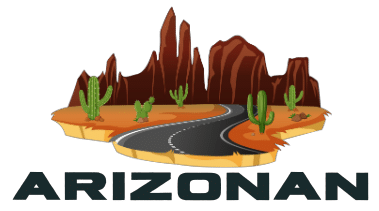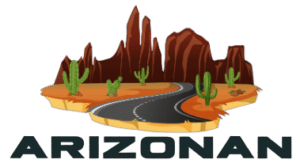Fountain Hills
Thank you for reading this post, don't forget to subscribe!the town of Fountain Hills is the perfect get-away from the hustle and bustle of big city life. Roll that urban sprawl into a tiny little ball and toss it in the refuse as you amble down the hall. Peaceful living is what you’ll find lurking at The Fountains
The city of Scottsdale is to the west, along with most of the other Valley of the Sun cities and towns. There are more than 11,000 acres that make up the town of Fountain Hills. The town sits 500 feet above capital city in the McDowell Mountains. Fountain Hills has a population of 16,000.
Residents use two main roadways to get to other parts of the Valley of the Sun from Fountain Hills. The Beeline Highway (State Highway 87) runs to the southeast of town while Shea Road travels from the city of Scottsdale into Fountain Hills from the west.
Fountain Hills is located about 30 miles from downtown Phoenix. Fountain Hills is secluded and lies in the desert’s natural beauty.
Climate
The climate is typical of the southwest. There is a mild winter that is balanced by a long hot, dry summer. Many have claimed that the dry, hot summer conditions have helped to relive many of their allergy symptoms. Summer days are clear and spectacular and the temperatures are truly remarkable. Spring and autumn are mild transitions into the other seasons. There is a brief monsoon season that is truly extraordinary.
Fountain Hills Properties
Those circumspect enough to include Fountain Hills in their property search will discover a variety of dwelling and living choices. The town is popular for both retirees and families.
Golf course properties, custom homes, estates on expansive lots, condominiums, patio homes, and single family homes are available. Properties provide privacy and an opportunity to take in the beauty of the desert.
Although, the Fountain Hills is off the beaten path, the town still provides its residents all the comforts and conveniences desired. Shopping, schools, and business are all found within the boundaries of Fountain Hills and many find it a charming, friendly community that boasts a backdrop of breathtaking desert mountain scenery.
Click here to locate homes and properties in the Fountain Hills area.
The Market
The spectacular amount of market activity in Arizona over the past decade has been well documented. People of all walks of life have been moving to Arizona, and particularly Phoenix, in numbers unmatched in recent memory.
Figures from 2000-2005 show nothing but increased construction, development, unit sales and unit sales prices in virtually every category of structure offered on the market.
The greatest degree of growth occurred during fiscal 2005, where previous growth statistics, impressive in their own rights, spiked sharply to even higher levels.
Of particular note to the residential home seller/buyer was the record appreciation in new and resale home values. These rates were up for new homes and resales, rentals and condominium units, the only difference being one of degree.
While it is true that not all Phoenix area real estate markets showed the same amount of increase it is true that the degree of growth for each area was roughly proportional.
Then along came 2006 and equally well documented has been the decline in the rate of growth of some key market indicators. The greater Phoenix resale home market is showing marked decreases in sales figures for comparable periods last year across the valley and across most unit categories.
One interesting exception is median price for resale units has risen slightly. This rising price accompanied by a decrease in sales seems to be more in keeping with normal market tendencies. One would expect spectacular growth to lead eventually to a degree of scarcity that would be reflected in higher prices. Could this indicate that the market has reached its peak?
Let’s look at another indicator to see what it may tell us.
Since 1985, the Arizona Real Estate Center has computed what it calls “affordability indexes” for the Greater Phoenix area and several nearby cities.
The index was invented as a guide to predict market activity. When the index value is 100, the typical home buyer (based on the current median resale price and household income) would be able to afford a median-priced home at the stated effective interest rate. A lower index value indicates less availability of affordable single-family homes.
The affordability index for the areas selected for study shows significant reduction in the availability of that this type of housing within the means of the ordinary consumer.
Whether this data can be used as a reliable indicator for other groups and other types of housing is arguable, but it does beg the question “how much longer will the market be able to sustain a situation where both sellers and buyers can apparently benefit by getting involved in the market?
The short answer is that these conditions can remain so long as they are supported by the market.
So when we take a long look at the larger picture we must ask ourselves whether we can realistically expect to realize more potential gain or value now or at some time in the future and it is very reasonable to conclude that the best possible time to buy or sell Arizona really is now.
History
From the very beginning it was all planned. In 1960, Robert P. McCulloch purchased 4,500 acres of land northeast of Scottsdale. The land was once a cattle ranch and was a part of the largest land and cattle holdings in Arizona.
But McCulloch had a vision. He planned to developo one of the most desireable subdividions in Arizona, so he changed the cattle land into a community.
Charles Wood Jr. was retained by McCulloch to make this dream community a reality. Wood’s resume was impressive: he was co-designer of Disneyland and had worked with McCulloch in the development of Lake Havasu City; another successful McCulloch community located along the Colorado River in Arizona .
IMcCulloch had marketing sense and he knew that a memorable landmark would popularize the community. So he built this huge fountain right in the middle of the deser to act as a beacon- drawing curious sight-seers llike so many moths to the flame.
The landmark fountain was the world’s tallest fountain and was listed in the Guinness Book of World Records. The fountain is almost three times higher than Old Faithful Geyser in Yellowstone National Park.
A 32-acre park surrounds the fountain which shoots its glorious stream in a 560 foot high airborne splurge. The event occurs every 15 minutes from 10:00 to 9:00 daily. The creators of the fountain decided to use reclaimed irrigation water.
By 1971 many came to the community to buy land and Fountain Hills was incorporated in 1989. During the early 1990’s, Fountain Hills was rated on of the fifty best places to raise a family.
One of the best characteristics of the town is the spectacular views and fresh air coupled with the proximity of the city life in Phoenix. The town continues to grow, although Indian Reservations, a park and a mountain range place a natural, healthy restriction on how far the town can stretch.
Fountain Hills Entertainment
Today, the town’s motto is “All that is Arizona.” This all encompassing notion is reflected in the center of town at a man made lake. Here, visitors will find the world’s tallest, continually flowing fountain.
The fountain shoots a spray of water high into the air approximately every 15 minutes. This geyser of water shoots five feet taller than the Washington Monument.
The early developers chose the fountain to differentiate the town from others. The fountain continues to bring people to this area each year.
The annual Great Fair in February and Fountain Festival of the Arts and Crafts in November make Fountain Hills the ideal hometown. The town is a blend of individuals who have earned their fortunes, to those who are just setting out to earn theirs.
Today, many retirees and families select Fountain Hills as their home.
Experiencing all of life and nature’s beauty is what living in Fountain Hills is all about.
Fountain Hills Outdoor Recreation
Another landmark along the northeastern horizon of town is Four Peaks Mountain. The peaks rise up past 7,500 feet into the air, surpassing all others in the Valley of the Sun. Four Peaks Mountain is within the Tonto National Forest where approximately 40 miles of trails are available for hikers.
Outdoor enthusiasts call the town of Fountain Hills home. Saguaro Lake is a little over 10 miles northeast of town and Bartlett Lake is about 50 miles north. Visitors to these local lakes will find swimming, boating, fishing, picnicking, waterskiing, and much more.
Golfing is another outdoor sport that is very popular in town. There are several local golf courses and spectacular resort club styled courses located nearby. Residents enjoy playing rounds of golf year round.
Salt River and Saguaro Lake located just 12 miles away, Canyon Lake 80 miles and Bartlett Lake and Horseshoe Lake are each only 50 miles away making them a short drive away.
Out of Africa Wildlife Park is a terrific place to go see exotic animals. This park has many entertaining and educational animal shows offered through out the day. The tigers are everyone’s favorite.
Fort McDowell Casino is just one of the more popular gaming areas near Phoenix.
Outdoor activities are found all around Fountain Hills. Saguaro Lake has boating, fishing and picnicking. This lake was formed by a dam along the Salt River and is very close to town.
Fountain Park is a 32-acre park that surrounds the Fountain, after which the town is named. The park is a delightful spot to enjoy the blast of water or picnic or walk the scenic trails.
McDowell Mountain Regional Park sits between the Lower Verde Basin and the McDowell Mountains. It is 21,099-acre park with room for camping, hiking, mountain biking and horseback riding trails.
Events:
Fountain Hills Arts and Crafts Fair February
Fourth of July Celebration July
Great Fair November

